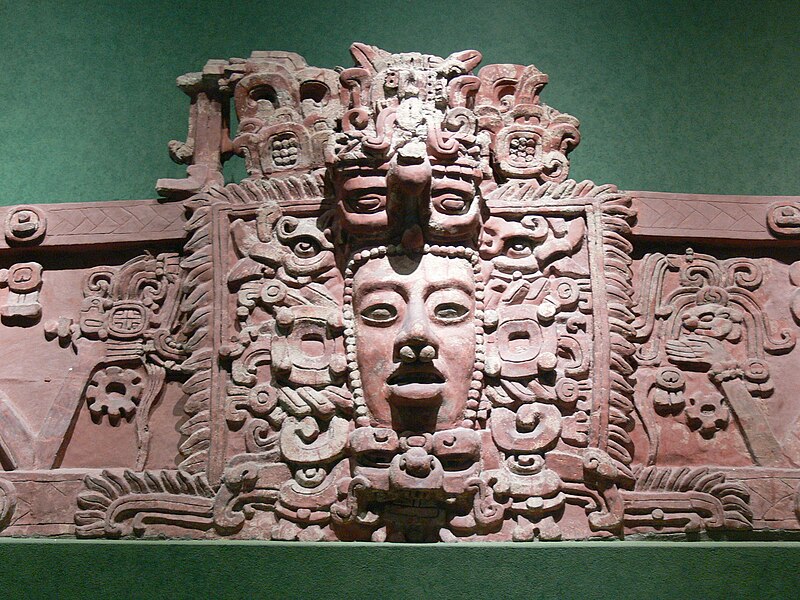| Online: | |
| Visits: | |
| Stories: |

| Story Views | |
| Now: | |
| Last Hour: | |
| Last 24 Hours: | |
| Total: | |
25 Unbelievable Facts About The Mayans That Might Surprise You
List25 presents 25 unbelievable facts about the Mayans that might surprise you. “The Mayan civilization actually preceded and outlived the Aztecs by hundreds upon hundreds of years. These are 25 unbelievable facts about the Mayans that might surprise you!”
List25 presents 25 unbelievable facts about the Mayans that might surprise you. “The Mayan civilization actually preceded and outlived the Aztecs by hundreds upon hundreds of years. These are 25 unbelievable facts about the Mayans that might surprise you!” The ancient Maya civilization was a Mesoamerican civilization developed by the Maya peoples, noted for Maya script, the only known fully developed writing system of the pre-Columbian Americas, as well as for its art, architecture, and mathematical and astronomical systems.
The Maya civilization developed in an area that encompasses southeastern Mexico, all of Guatemala and Belize, and the western portions ofHonduras and El Salvador. This region consists of the northern lowlands, encompassing the Yucatán Peninsula, the highlands of the Sierra Madre, running from the Mexican state of Chiapas, across southern Guatemala and onwards into El Salvador, and the southern lowlands of the Pacific littoral plain.
The Preclassic period saw the establishment of the first sedentary communities in the Maya region, and the cultivation of the staple crops of the Maya diet, including maize, beans, squashes, and chili peppers. The first Maya cities developed around 750 BC, and by 500 BC these cities possessed monumental architecture, including large temples with elaborate stucco façades. Hieroglyphic writing was being used in the Maya region by the 3rd century BC. In the Late Preclassic a number of large cities developed in the Petén Basin, and Kaminaljuyu rose to prominence in the Guatemalan Highlands. Beginning around 250 AD, the Classic period is largely defined by when the Maya were raising sculpted monuments with Long Count dates.
This period saw the Maya civilization give rise to a large number of city-states linked by a complex trade network. In the Maya Lowlands, the two great rivals Tikal and Calakmul became powerful. The Classic period also saw the intrusive intervention of the central Mexican city of Teotihuacan in Maya dynastic politics. In the 9th century, there was a widespread political collapse in the central Maya region, resulting in internecine warfare, the abandonment of cities, and a northward shift of population. The Postclassic period saw the rise of Chichen Itza in the north, and the expansion of the aggressive K’iche’ kingdom in the Guatemalan Highlands. In the 16th century, the Spanish Empire colonised the Mesoamerican region, and a lengthy series of campaigns saw the fall of the last Maya city in 1697.
Classic period rule was centred around the concept of the “divine king”, who acted as a mediator between mortals and the supernatural realm. Kingship was patrilineal, and power would normally pass to the eldest son. A prospective king was also expected to be a successful war leader. Maya politics was dominated by a closed system of patronage, although the exact political make-up of a kingdom varied from city-state to city-state. By the Late Classic, the aristocracy had greatly increased, resulting in the corresponding reduction in the exclusive power of the divine king. The Maya civilization developed highly sophisticated art forms, and the Maya created art using both perishable and non-perishable materials, including wood, jade, obsidian, ceramics, sculpted stone monuments, stucco, and finely painted murals.
Maya cities tended to expand haphazardly, and the city centre would be occupied by commercial and administrative complexes, surrounded by an irregular sprawl of residential districts. Different parts of a city would often be linked by causeways. The principal architecture of the city consisted of palaces, pyramid-temples, ceremonial ballcourts, and structures aligned for astronomical observation. The Maya elite were literate, and developed a complex system of hieroglyphic writing that was the most advanced in the pre-Columbian Americas. The Maya recorded their history and ritual knowledge in screenfold books, of which only three uncontested examples remain, the rest having been destroyed by the Spanish. There are also a great many examples of Maya text found on stelae and ceramics. The Maya developed a highly complex series of interlocking ritual calendars, and employed mathematics that included one of the earliest instances of the explicit zero in the world.

Wolfgang Sauber (User:Xenophon)
SOURCE: list25
Click Here to Read More of John Ale’s Stories





judeo-christo-CREEPS of the Jesuit Criminal order of the holy roman Pedophile catholic church are the Spanish Criminals who destroyed the Knowledge of the Mayan Civilization!
The Catholic church of Organized pedophiles should CEASE to exist, with ALL of it’s assets seized by the world court for re-distribution to its victims’ descendents!
God damn the christian man!